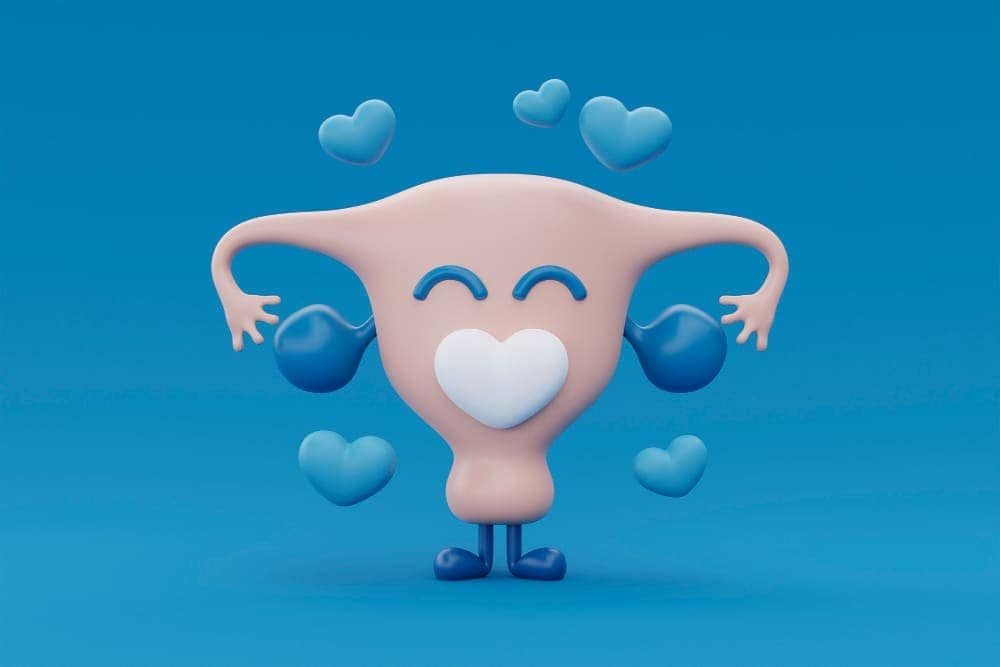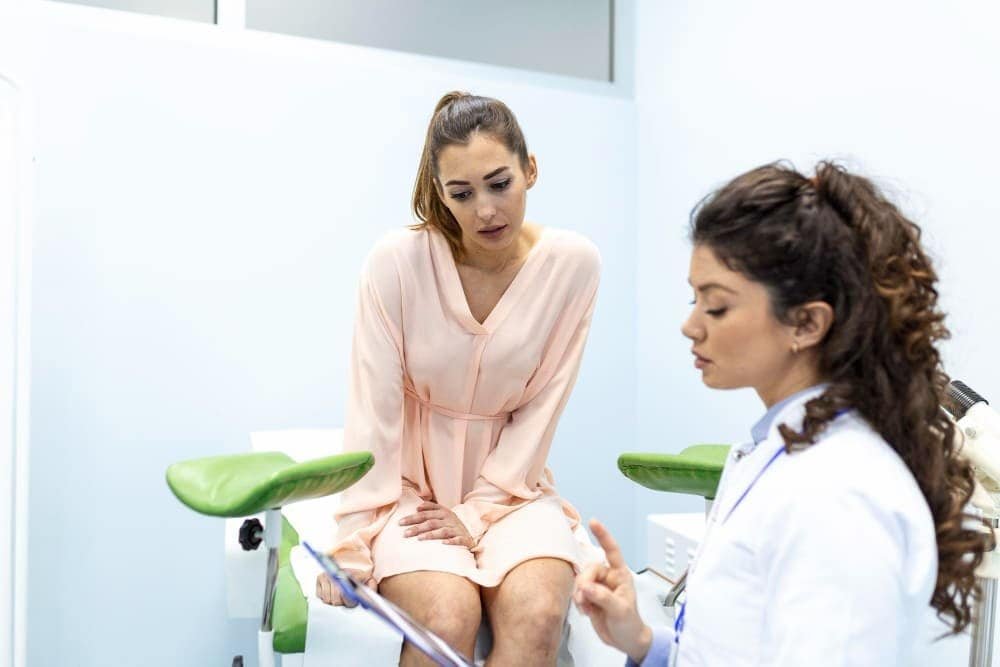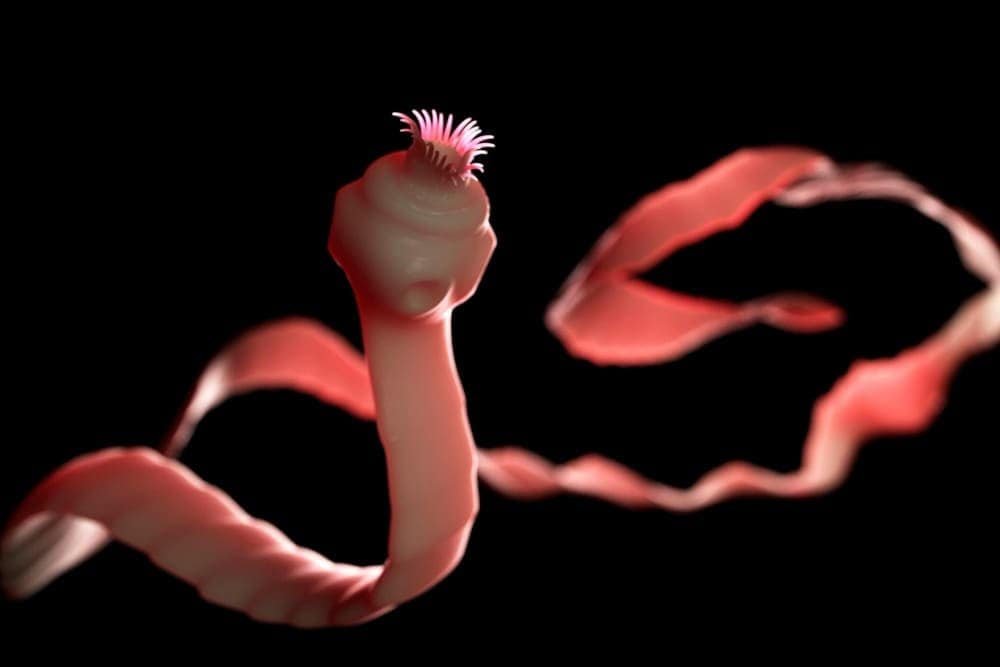Adenomyosis vs endometriosis—two conditions that sound similar but affect the uterus in very different ways. Both can cause pain, heavy bleeding, and fertility issues, yet they involve different tissues and locations. Let’s break down the differences. 🌸

What Is Adenomyosis?
Adenomyosis is a gynecological condition where endometrial-like tissue (similar to the lining of your uterus) grows into the muscle of your uterus (myometrium). This growth causes the uterine wall to thicken, making periods heavier and more painful.
Key features of adenomyosis:
- Endometrial tissue grows inside the muscle of the womb.
- Common symptoms include heavy menstrual bleeding, severe pelvic pain, and an enlarged uterus (sometimes called the “adenomyosis belly”).
- The condition can be diffuse (spread widely in the muscle) or focal (forming adenomyomas).
Adenomyosis occurs in women of reproductive age and can lead to fertility issues if untreated. The pain often worsens over time, and the impact on daily life can be significant.
What Is Endometriosis?
Endometriosis is a separate gynecological condition where endometrial-like tissue grows outside the uterus, often in the pelvis, ovaries, fallopian tubes, and sometimes the bladder or bowel.
Key features of endometriosis:
- Tissue grows outside the uterus, where it doesn’t belong.
- It can attach to pelvic organs, causing inflammation and scarring.
- Common symptoms include pelvic pain, painful periods, painful intercourse, and sometimes digestive problems.
- The tissue still reacts to the menstrual cycle—thickening, breaking down, and bleeding—but has no way to exit the body.
Endometriosis can also affect fertility and cause chronic fatigue due to ongoing inflammation.
Adenomyosis vs Endometriosis: The Main Differences
Although both conditions involve endometrial-like tissue and can cause pelvic pain, they differ in location, impact on the uterus, and treatment approaches.
| Feature | Adenomyosis | Endometriosis |
|---|---|---|
| Location | Tissue grows into the muscle of your uterus (myometrium) | Tissue grows outside the uterus in the pelvis or other areas |
| Effect on Uterus | Thickens the uterine wall | Uterus size often remains normal |
| Common Symptoms | Heavy menstrual bleeding, enlarged uterus, severe cramps | Pelvic pain, pain during intercourse, digestive symptoms |
| Impact on Fertility | Can reduce fertility by affecting the muscular structure of the uterus | Can reduce fertility by damaging ovaries or fallopian tubes |
| Diagnosis | Often detected via MRI or ultrasound | Diagnosed through laparoscopy or imaging |
| Treatment | Hormonal therapy, uterine-sparing procedures, UAE | Hormonal therapy, laparoscopic excision, pain management |
Shared Symptoms and Overlap
It’s possible to have adenomyosis and endometriosis together, which can make diagnosis more complex. Both conditions can cause:
- Infertility
- Fatigue and reduced quality of life
- Pelvic pain before and during your period
- Heavy bleeding or prolonged menstrual cycles
The difference lies in where the tissue grows and how it affects the uterus and pelvic structures.
Adenomyosis vs Endometriosis Pain: Is One Worse?

Pain levels vary between individuals. Some women with mild disease experience severe symptoms, while others with advanced disease may have minimal discomfort.
- Adenomyosis pain often feels like deep, intense cramping that worsens during periods due to the muscle being infiltrated by endometrial cells.
- Endometriosis pain can occur both during and outside of periods, sometimes radiating to the back or legs, and may be triggered by intercourse or bowel movements.
Adenomyosis vs Endometriosis: Ultrasound and Diagnosis
Adenomyosis:
- Best diagnosed with MRI or high-resolution ultrasound.
- Signs include thickened uterine walls, irregularities in the muscle of your uterus, and “streaky” patterns in imaging.
Endometriosis:
- Often requires laparoscopy for a definitive diagnosis.
- Ultrasound can detect larger cysts (endometriomas), but small implants are harder to see.
Adenomyosis vs Endometriosis vs Fibroids
Fibroids are benign growths of muscle and connective tissue in the uterus. While they can cause heavy bleeding and pelvic pain, they differ from adenomyosis and endometriosis because they are solid tumors, not infiltrating endometrial-like tissue.
- Fibroids: Distinct, well-defined lumps in the uterus.
- Adenomyosis: Diffuse or localized thickening of the muscle due to infiltrating tissue.
- Endometriosis: Tissue growths outside the uterus.
Adenomyosis vs Endometriosis Treatment
Adenomyosis Treatment Options:
- Hormonal therapy (IUDs like Mirena, birth control pills, GnRH agonists)
- Uterine artery embolization (UAE)—a non-surgical, uterus-preserving treatment performed by interventional radiologists like Dr. Samir Abdel Ghaffar
- Adenomyomectomy—surgical removal of affected tissue (best for focal cases)
- Hysterectomy—complete removal of the uterus (definitive treatment but ends fertility)
Endometriosis Treatment Options:
- Hormonal therapy to suppress the menstrual cycle
- Laparoscopic excision of lesions
- Pain management with medications
- Assisted reproductive technologies for infertility
Why Uterine Catheterization (UAE) Stands Out for Adenomyosis
While hysterectomy has long been the definitive cure for adenomyosis, it’s not the only way to stop symptoms. Uterine artery embolization offers an effective, minimally invasive alternative:
- No large surgical cuts 🩷
- Preserves the uterus and potentially fertility
- Treats both adenomyosis and fibroids in one procedure
- Recovery in days, not weeks
- Proven long-term symptom relief
For women with intractable adenomyosis symptoms, UAE gives a good chance at controlling the disease without resorting to major surgery.
Lifestyle and Medical Management for Both Conditions
Both adenomyosis and endometriosis can benefit from:
- Anti-inflammatory diet
- Regular exercise (gentle, pelvic-friendly)
- Stress management (yoga, meditation)
- Medical follow-up to monitor disease progression
Adenomyosis vs Endometriosis: Which Is Worse?
Neither condition is “worse” in all cases—they affect women differently. Adenomyosis often causes heavier menstrual bleeding, while endometriosis may cause more chronic pelvic pain and fertility issues outside the uterus.
The “worse” condition is the one that impacts your daily life more severely, and that’s why personalized treatment matters.
Real Stories and Support
On communities like r/adenomyosis and endometriosis forums on Reddit, women share journeys of pain, delayed diagnosis, and eventual relief. Many describe finding hope through treatments like UAE or laparoscopic surgery, depending on their condition.
Knowledge Is Power in Choosing the Right Path
Understanding the differences between adenomyosis and endometriosis is the first step toward managing your symptoms and protecting your reproductive health.
For adenomyosis sufferers, uterine artery embolization provides an effective, uterus-preserving solution, avoiding hysterectomy while delivering lasting relief.
If you’re struggling with pelvic pain or heavy menstrual bleeding, consult a specialist to get a clear diagnosis and explore all your options. The right treatment can give you back control of your life. 🌼

 العربية
العربية 
